It’s Happy Cat Month! Even though Happy Cat Month is winding down we can still chat about one of my favorite topics: how to keep your pet happy and therefore healthy. We often joke about our cats’ self sufficiency, but do they have what they need to live a happy and full life? Do you know the five pillars of feline enrichment?
Why does feline enrichment matter?
Cats maintain a behavioral instinct for survival that is not present with most other domesticated animals. Many behaviorists believe that is because cats still are not fully domesticated. Those of us who wake up at 2am because darling kitty is pouncing and chewing on our toes can attest to that! Cats are highly adaptable as a result of evolving as both a predator and prey animal. While this is wonderful for apartment living, we have to remember that because of that adaptability and semi-“wildness” our cats need plenty of stimulation to stay healthy.
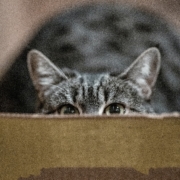 Boredom for your cat can lead to destructive and disruptive behaviors, as well as stress. Cats who are bored will sometimes scratch inappropriately (your brand new sofa) or exhibit aggression or excessive vocalization. According to veterinarian Dr. Liz Bales, cats who are provided with an appropriate environment and plenty of enrichment are less prone to stress induced illness such as obesity, feline lower urinary tract disease, respiratory infections, aggression or other behavioral issues, and over-grooming or other compulsive conditions.
Boredom for your cat can lead to destructive and disruptive behaviors, as well as stress. Cats who are bored will sometimes scratch inappropriately (your brand new sofa) or exhibit aggression or excessive vocalization. According to veterinarian Dr. Liz Bales, cats who are provided with an appropriate environment and plenty of enrichment are less prone to stress induced illness such as obesity, feline lower urinary tract disease, respiratory infections, aggression or other behavioral issues, and over-grooming or other compulsive conditions.
An “appropriate environment” consists of ways for your cat to express all of his or her catty behaviors and I don’t mean a major cattitude! Cat’s natural behaviors include scratching, chewing, stalking, climbing, eating, and elimination. In a study by veterinarians at Ohio State University, Meghan Herron and C.A. Tony Buffington developed a set of five systems to take into account in environmental enrichment: physical resource (space), nutrition, elimination, social, and behavior. These are similar to the five pillars of enrichment developed by expert cat behavior consultant Marci Koski, PhD.
5 Pillars of Feline Enrichment:
1. Provide multiple and separated key environmental resources.
These key resources include food, water, elimination areas, scratching areas, play areas, and rest/sleeping areas.
Most cats prefer to eat in a quiet, out of the way area that will not be disturbed. If you have multiple cats/pets be sure to place their food where they cannot see each other, which could result in increased tension between the “competing” pets. Finding a place that is above eye level, if your cat can safely reach it, can feel much safer to your finicky friend. Often cats, with their fastidious nature, prefer running water to still water that has been sitting in a bowl (regardless of how frequently you replace that water bowl). In this case, try buying a water fountain for your cat to enjoy fresh running water and encourage hydration.
Be sure that you have enough litter boxes in your home and that they are in a safe, quiet area. The rule of thumb is have a litter box for every cat plus one. This does not mean if you have 2 cats, you should line 3 litter boxes up next to each other. Your cats should have multiple locations for safe litter box use. This way all boxes cannot be blocked by another pet in the case of resource guarding or an argument. You should attempt to set up all of the boxes in locations that have options for entrance and exit so that they could not be blocked at all.
Scratching is an important part of a cat’s routine. It provides an opportunity for stretching and allows the removal of nail sheaths to maintain nail health. Scratching can also allow your cat to leave visual marks and scents for other animals to show rank, gender, or other pertinent details. Many cats like to scratch and stretch after a nap, so placing scratching posts and pads near favored napping spots for each cat can be beneficial.
Often you’ll find that your cats have differing play styles. Giving your cat a designated space for their preferred play/toys can prevent disruption, disagreements, and unwanted behaviors when it isn’t playtime.
2. Provide opportunity for play and predatory behavior.
Your cat has crinkly balls, strings, fuzzy mice, and wads of paper scattered around the house, but never plays with them. While 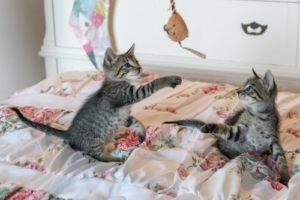 providing multiple types of toys is wonderful, cats are rarely interested in things that don’t move (like with their water). Sure, they could bat at a fuzzy mouse with their paw, but how can that compare to a bunch of feathers whizzing through the air and under the sofa like a bird trying to escape! Movement and novelty are important for cats’ play because they so closely resemble hunting. Cats in the wild would need to hunt birds, mice, snakes, or bugs who all move, smell, and look differently. Providing interactive play for your cat is essential to keep him or her active and engaged. The paper bag you brought your groceries home in or the box that your groceries were delivered in could provide your cat with hours (or minutes) of new entertainment.
providing multiple types of toys is wonderful, cats are rarely interested in things that don’t move (like with their water). Sure, they could bat at a fuzzy mouse with their paw, but how can that compare to a bunch of feathers whizzing through the air and under the sofa like a bird trying to escape! Movement and novelty are important for cats’ play because they so closely resemble hunting. Cats in the wild would need to hunt birds, mice, snakes, or bugs who all move, smell, and look differently. Providing interactive play for your cat is essential to keep him or her active and engaged. The paper bag you brought your groceries home in or the box that your groceries were delivered in could provide your cat with hours (or minutes) of new entertainment.
Think about the 4 C’s of play for cats: challenge, choice, change, and control. Cats should be physically and mentally stimulated with play. Find games that encourage problem solving like puzzle toys or trick/behavior training. Believe me, it’s possible! Just ask Charlie, a super smart tortie cat I visited for years. She learned how to high five and spent much of the visits smacking me (not always my hand!) to get treats and loving every minute of it. Provide your cats with a choice of toys/games to increase their confidence and engagement. Switch up toys often to prevent boredom. Behaviorists recommend that you change out your cat’s toys every 3-7 days. Providing multiple options or opportunities for toys, new scents or objects to explore, or training lets cats have some control over how they interact with their environment as well as the whether or not to do so. Cats require both that control and choice to fee secure and confident in you and in their home.
Because most of our cats either free feed throughout the day or are given a pre-portioned amount of food at a set time each day, they have lost the need to hunt for their food. Finding unique ways to feed your cat can spice up his or her meal time and provide cognitive and sensory stimulation. If your cat eats wet food try putting their soft food into an ice cube tray or muffin tin or smearing it inside of a mug (just make sure your cat can comfortably fit his/her head in the mug, some cats do not like such tight spaces so this is not for everyone). For cats who eat kibble, treat dispensers like these and food puzzle toys are an excellent way to dispense your cat’s kibble in a more interactive and stimulating way. There are even treat toys that are shaped like mice that you can hide from your cat to emulate stalking and chasing prey! If you don’t mind some extra cleaning, many of the available puzzle toys can be utilized for wet food as well as kibble. Be sure to start with an easier puzzle toy for your cat to ensure success and subsequent motivation.
3. Provide a safe place.
 Cats are particularly sensitive to disruptive environments: your dogs barking, your children playing, or your disco dancing while singing to “Mama Mia” at the top of your lungs (definitely not speaking from experience). You do not need to halt all of those activities, indeed it would be quite difficult to do so. But creating a micro-environment or “safe haven” for your cat(s) in separate places is essential for their well-being. Put together a comfortable, contained, preferably elevated location for your cat to retreat when the world becomes too much to handle. If you have a multi cat household then be sure to have more safe spaces than cats to not cause resource guarding or arguments. Consider utilizing vertical space. Cats often feel most secure at heights so providing cat trees, window perches, or shelves can allow your cat to rest, hide, and perch to survey their domain in comfort.
Cats are particularly sensitive to disruptive environments: your dogs barking, your children playing, or your disco dancing while singing to “Mama Mia” at the top of your lungs (definitely not speaking from experience). You do not need to halt all of those activities, indeed it would be quite difficult to do so. But creating a micro-environment or “safe haven” for your cat(s) in separate places is essential for their well-being. Put together a comfortable, contained, preferably elevated location for your cat to retreat when the world becomes too much to handle. If you have a multi cat household then be sure to have more safe spaces than cats to not cause resource guarding or arguments. Consider utilizing vertical space. Cats often feel most secure at heights so providing cat trees, window perches, or shelves can allow your cat to rest, hide, and perch to survey their domain in comfort.
4. Provide positive, consistent, and predictable human-cat social interaction.
Cats are sociable creatures; even feral cats live in colonies. However, they do develop social relationships at a unique rate. They are sometimes slow to trust and providing consistent interaction on their terms can make it easier for your cat to come to enjoy your attentions. Abrupt, loud, and sporadic/spastic movements are particularly offensive to cats and will cause them to retreat to a safe location if possible, or lash out if retreat is not an option. Ensuring that your interactions and reactions are always calm and smooth will go a long way toward helping your cat understand you and how to interact. Always give your cat the option to end interactions and never force attention on your cat.
5. Provide an environment that respects the importance of a cat’s sense of smell.
Cats have over 200 million scent receptors (humans only have 5 million), which means they have an incredibly keen sense of smell. A cat’s sense of smell is the primary way in which he or she interacts with the world. Their vomeronasal gland allows cats to detect pheromones that are released both by other animals and humans. Because cats can smell so much better than us we may forget that the body lotion or glade diffuser or even the scented litter that we think makes the house smell fresh can be overwhelming to your cat. Essential oils can be especially harmful to your cat so be sure to diffuse them in areas that are well ventilated and away from your kitty.
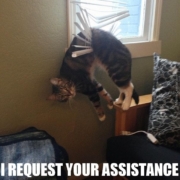
So there you have it: the importance of feline enrichment and the core ideas behind creating a safe, happy, and healthy life for your cat.
Are you a catvocate for your cat’s mental and physical health? If you weren’t before, are you now?
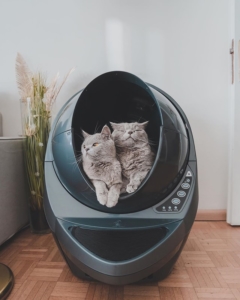

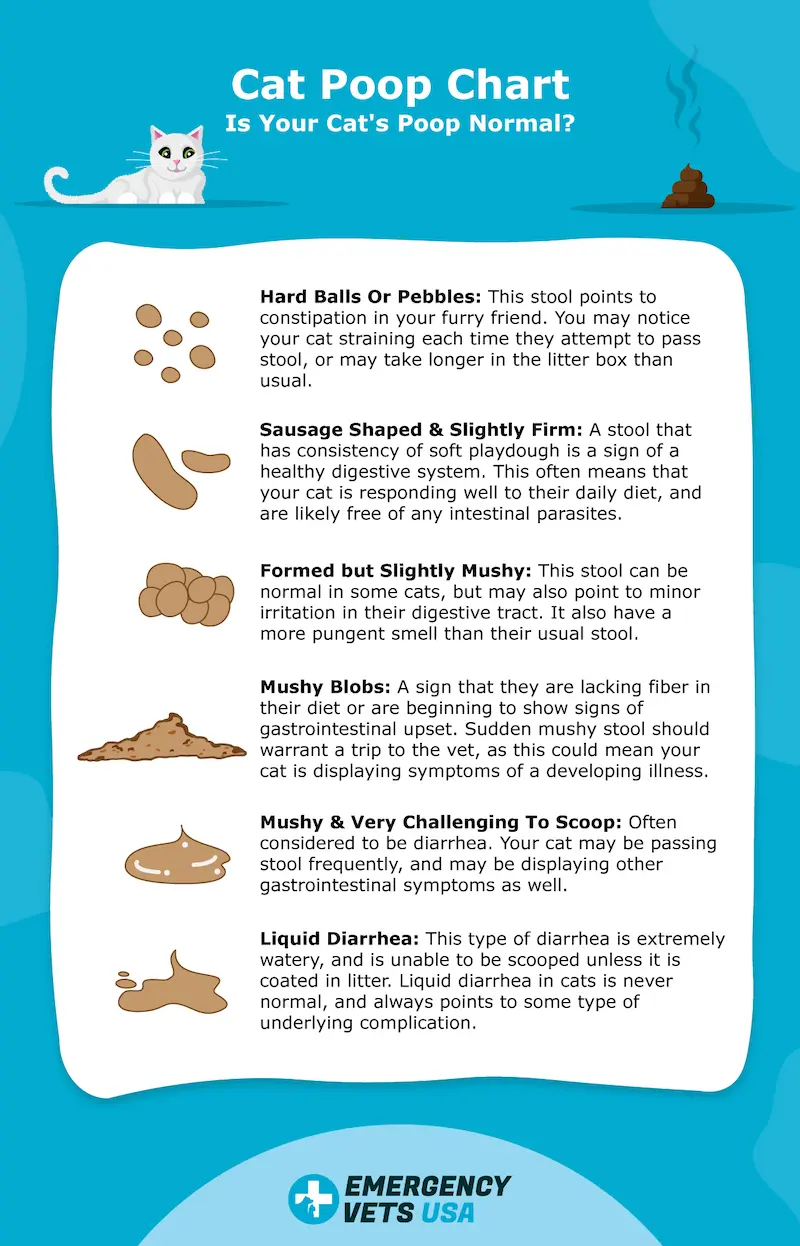

 Boredom for your cat can lead to destructive and disruptive behaviors, as well as stress. Cats who are bored will sometimes scratch inappropriately (your brand new sofa) or exhibit aggression or excessive vocalization. According to veterinarian
Boredom for your cat can lead to destructive and disruptive behaviors, as well as stress. Cats who are bored will sometimes scratch inappropriately (your brand new sofa) or exhibit aggression or excessive vocalization. According to veterinarian  providing multiple types of toys is wonderful, cats are rarely interested in things that don’t move (like with their water). Sure, they could bat at a fuzzy mouse with their paw, but how can that compare to a bunch of feathers whizzing through the air and under the sofa like a bird trying to escape! Movement and novelty are important for cats’ play because they so closely resemble hunting. Cats in the wild would need to hunt birds, mice, snakes, or bugs who all move, smell, and look differently. Providing
providing multiple types of toys is wonderful, cats are rarely interested in things that don’t move (like with their water). Sure, they could bat at a fuzzy mouse with their paw, but how can that compare to a bunch of feathers whizzing through the air and under the sofa like a bird trying to escape! Movement and novelty are important for cats’ play because they so closely resemble hunting. Cats in the wild would need to hunt birds, mice, snakes, or bugs who all move, smell, and look differently. Providing  Cats are particularly sensitive to disruptive environments: your dogs barking, your children playing, or your disco dancing while singing to “Mama Mia” at the top of your lungs (definitely not speaking from experience). You do not need to halt all of those activities, indeed it would be quite difficult to do so. But creating a micro-environment or “safe haven” for your cat(s) in separate places is essential for their well-being. Put together a comfortable, contained, preferably elevated location for your cat to retreat when the world becomes too much to handle. If you have a multi cat household then be sure to have more safe spaces than cats to not cause resource guarding or arguments. Consider utilizing vertical space. Cats often feel most secure at heights so providing cat trees, window perches, or shelves can allow your cat to rest, hide, and perch to survey their domain in comfort.
Cats are particularly sensitive to disruptive environments: your dogs barking, your children playing, or your disco dancing while singing to “Mama Mia” at the top of your lungs (definitely not speaking from experience). You do not need to halt all of those activities, indeed it would be quite difficult to do so. But creating a micro-environment or “safe haven” for your cat(s) in separate places is essential for their well-being. Put together a comfortable, contained, preferably elevated location for your cat to retreat when the world becomes too much to handle. If you have a multi cat household then be sure to have more safe spaces than cats to not cause resource guarding or arguments. Consider utilizing vertical space. Cats often feel most secure at heights so providing cat trees, window perches, or shelves can allow your cat to rest, hide, and perch to survey their domain in comfort.